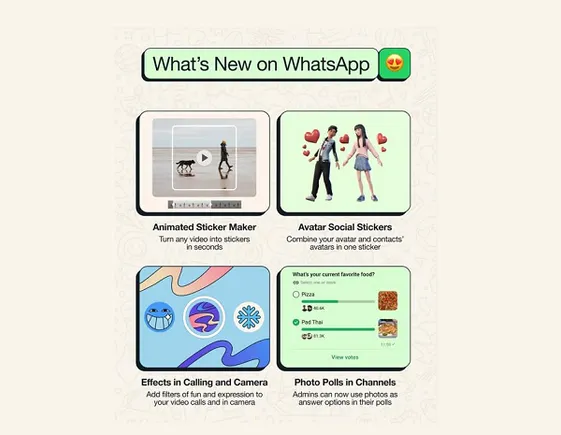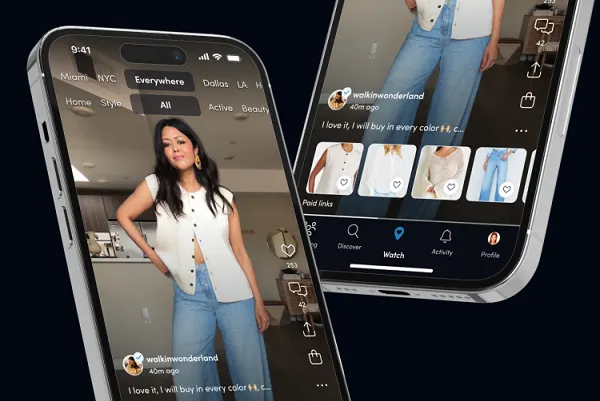How to Improve Your Content Writing Skills by Using an Interview Process (+ 6 Other Content Writing Tips)
We cover a list of 7 content writing tips to help you improve your writing skills, from how to properly research a topic to how to edit your writing.

In this post, we share 7 content writing tips based on 8 years of experience creating content that ranks for bottom-of-the funnel keywords and drives leads for our clients.
Content Writing Tips
- Use an interview-backed research process
- Be your own editor
- Organize your thoughts into bullet points
- Look for symmetry between your intro and body sections
- Read your piece only by its headings
- Get to the value of a sentence faster
- Write towards the job, not job titles
The first tip — use an interview-backed research process — is the most important on our list.
At Grow and Convert, we interview our clients to 1) generate blog post topics and 2) help us write those posts to deliver value. This process is crucial for writing high-quality content because understanding the audience shapes how you write.
The next 6 tips focus on editing and presenting the information you’ve gathered from your interviews. But remember, incorporating interviews is essential. Without them, your content might read well but will lack the specificity and detail that impress an informed target customer and motivate conversions.
A quick note on the growing role of AI tools in content writing: We recently surveyed 50+ marketers about their writing process with AI. The second most common use case was improving writing with AI. We found that the tips in this post still apply when using AI tools. For instance, you can upload a piece of content to your AI tool and ask it to make edits that align with tip #3 (organizing thoughts into bullet points) or tip #6 (getting to the value of the sentence faster).
1. Use an Interview-Backed Research Process
When you get an assignment, emphasize to your client the importance of conducting an interview to help you research the topic. Use this interview to gather insights about the intended audience and what matters to them within the context of your topic.
There are several benefits to this approach.
First, it leads to better results for your clients, which helps show value and improve retention. When writing a piece of content for a company, your goal is usually to capture their target customer’s attention (whether through Google Search, ads, or email campaigns) and prompt action from the customer (like signing up for a free trial, scheduling a demo, joining a newsletter).
To do this effectively, you need more than just topic knowledge — you need insights into your client’s customers, particularly the features they value most.
For example, let’s say you’re working on content marketing for StartUp Accounting, a (fictional) accounting service specializing in startups. They’re building an organic channel to attract new customers. As part of your content strategy, you’re writing a blog post targeting the keyword “best accounting software for startups.” The post will outline software options for startups while positioning StartUp Accounting’s services as a better option for specific use cases.
This isn’t a trivial assignment. To do it properly, you need to understand key details, such:
- What do startups need most from accounting services?
- How do startups manage their accounting before looking for software options?
- How does your client’s service solve the specific accounting problems these customers face?
Even if you’ve written about accounting software before, you still need to know how StartUp Accounting specifically solves their customers’ problems.
In our experience, interviewing their team is the best way to gain this understanding. Without an interview, you’re left relying on Google, YouTube, AI tools, and the client’s website — which can be helpful but shouldn’t be the sole basis for your piece of content. What others say isn’t always valuable information to your reader.
An interview lets you uncover unique insights about your client and their target audience that you can’t find anywhere else.
Second, using interviews makes your job as a writer more enjoyable, more interesting — and, in a way, easier. When you interview a subject-matter expert, you’re learning new things from someone knowledgeable. This can be far more fulfilling than researching on your own, which often means sifting through a lot of bad mirage content found online.
It also makes researching the topic easier. You’re not left trying to figure out technical terms or nuances by yourself. You have a knowledgeable resource who can explain things clearly and put them into context. Plus, interviewing a client helps you understand which key points matter most and how to incorporate them effectively in your draft. This leads to a more efficient process and fewer edits when you submit the piece.
Finally, it opens up new topics you can write about with authority. Using an interview process also helps grow your career by allowing you to cover a variety of subjects.
At Grow and Convert, we’ve written about:
- Route optimization software
- Hyperhidrosis
- Digital asset management
- Paid media reporting
- Concussions
- The US healthcare billing system
- International shipping for IT companies
- Time clock software
- User testing
- Translation software
- 1-to-1 private education
And much, much more.
How We Use Interviews to Shape the Entire Content Writing Process: From Initial Topics to Final Draft
If you’re working with a content writing agency, the typical content production process looks like this:
- The agency’s SEOs/marketing managers conduct keyword research for the client.
- They prioritize the keywords and assign projects to content writers.
- You, the content writer, receive a content brief outlining the assignment.
When I just started out as a freelance content writer, I would get content briefs that looked like this:
- Article Keyword: Best accounting software for startups
- Audience: Accounting department / CFO at startups
- Estimated word count: 2,000-2,500 words
- Article guidelines
- Include links to stats that are no more than 3 years old
- Include an image every 250-300 words
- Write short paragraphs (no more than 4 sentences) and short sentences
- Use headings. Specifically, include h3 and h4 subheaders, but not h5s
- Include exact match keyword in the title and first heading
- Run the piece through Grammarly and get an overall score of 90 or higher
- Run the piece through Hemingway and get readability score of no higher than 7th grade
Unfortunately, all the information included in the brief is ineffective for guiding the writer to produce great content. It focuses on logistics — formatting instructions and basic on-page SEO (search engine optimization) best practices — rather than the argumentation or substance of the piece.
Even if you agree with some of these guidelines (like keeping the content at a 7th grade level), these edits are the easiest part of the process. They can be done at the end of drafting, so they don’t make our list of the most impactful content writing tips.
The hard part of content writing is creating content that is 1) aimed at your target audience and 2) backs up its claims. That’s the focus of our content creation process.
In fact, our process starts shaping the argumentation and understanding of customer pain points and the brand or product’s unique selling points before the content interview.
Namely, this begins during the topic ideation phase:
- We interview our clients before we look for keywords. We learn about the client’s company, what pain points it solves for their customers, who their best customers are, who they think their main competitors are, etc.
- Based on those interviews, we come up with topics that we think are most relevant to our client’s target audience.
- We then find keywords that correspond to that topic. Keywords are a critical part of our process, and we’ve written at length on topics such as competitor keywords, bottom of the funnel keywords, secondary keywords. Our process focuses on finding keywords tied to the target customer’s pain points, which is why we don’t start with keyword research.
- Finally, when it’s time to write a piece for a particular keyword, we interview a member of our client’s team to ask them questions about the given topic related to customer pain points and how the product or service addresses those pain points in relation to the keyword we’re writing about.
After we interview a subject, writers fill out a questionnaire based on the interview.
Our questionnaire process is fundamentally different from a typical content brief. It’s not about logistical details like word count or the number of internal links. Instead, it focuses on:
- Understanding your target audience. This goes beyond simply saying, “Our audience is a startup looking for accounting software” or “Our audience is likely an accountant at a startup and may have a limited budget.” That’s surface-level. You should be able to articulate the specific pain points the reader is likely experiencing that led them to search for “accounting software for startups.” This insight comes directly from the client interview. Until you’ve had the interview, you can’t be sure if the driving motivator is a faster process, a more affordable option, a more scalable solution, etc.
- Understanding the SERP (search engine results page) for the keyword. This involves analyzing the content ranking on Google and figuring out why certain pieces may be ranking. What does it say about search intent? For example, if multiple pieces in the SERP highlight “free” software, it might be worth talking about free software in your post. Whether you choose to cover the limits of free software or recommend it for certain customers depends on insights gathered in the interview.
After exploring those two areas, you propose an outline. Here, you have a lot of freedom. The outline section is a blank space, where you can propose your title, the kind of intro you want to write, and how you want the article structured. These decisions will be guided by your understanding of the target audience and the SERP.
If you’re interested in learning more about the questionnaire, topic ideation, content strategy process, sign up for our content writing course.
If this is the kind of content writing you excel at and want to do more of, apply to work with us. While we may not always have readily available writing assignments, we’re always on the lookout for skilled content writers.
AI use case for this tip: If you want to experiment with AI to write articles more efficiently, consider recording your client interview and uploading it into an AI tool for summarization. The AI can analyze the interview and provide a structured outline or summary of key topics. This saves time by eliminating the need to re-watch and transcribe the interview, speeding up the writing process, while still allowing you to maintain control over the article’s argument and structure.
2. Be Your Own Editor
Often when I receive a piece of writing from a writer I work with, or when I’m re-reading my own work, I think “This needs another round of edits.”
I’m not just talking about fixing typos or spelling mistakes (though those are important, and thorough proofreading is a must). What I’m really noticing is that the content is geared towards helping the writer understand the topic rather than being written for the audience. Writers need to understand a topic, and they do that by writing out their thoughts. But that shouldn’t be the end of the process, because the piece is meant for the audience, not the writer.
Here’s a very simple and exaggerated example:
Let’s say a writer is writing a blog post targeting the keyword “employee time tracking software,” and their primary audience is small business owners who need to track employee hours.
They might write an intro like this:
“Every employee loves taking time off. But as a business owner you’re busy trying to do your job, run your business, and keep your company staffed. So it can be frustrating to have to keep managing every new time off request that comes your way. The good news is that there is software.”
There’s a lot to critique in that small paragraph, and none of it is positive. But let’s focus on the first two lines, which come across as a writer trying too hard to relate to the audience. The writer is stating the obvious to the business owner.
Remember, this piece is for people Googling “employee time tracking software,” so they already know they need to track employee time. They recognize it’s a problem, understand the need for a solution, and are actively seeking software for help. This opener doesn’t add anything new — it’s just obvious.
If you were to read this as an editor, you’d think, “This is very obvious. What are the specific things the reader is trying to solve? Let’s start there.” And you’d see that “do your job” and “run your business” are the same thing and “keep your company staffed” is vague and potentially wrong.
Again, these things seem obvious when you consider the piece of content from an editor’s perspective, someone focused on the audience’s interests.
Before submitting work, make sure you’ve reviewed it with an editor’s mindset, not a writer’s.
But this is easier said than done, so I’m going to provide three different ways to help you switch into the editor role when working on your own piece.
Editing Tip #1: Take Some Time Away from Your Piece
For me, the best method is to step away from your piece for a day. When you’re in the middle of writing, you’re working in a state of mind that can make it challenging to see issues in your logic or approach.
But once you take a break, you’ll return to it with fresh eyes, and things that weren’t obvious before will become clear.
Editing Tip #2: Change the Font & Color of Your Content
This method is great for catching typos and styling issues, but it also helps you shift into an editor’s mindset.
By changing the font and color of your article to something absurd, like purple Comic Sans in size 16, you create distance between what you originally wrote and what is in front of you. It feels like a new piece written by someone else.


Editing Tip #3: Use a Text-to-Speech Feature to Have Your Piece Read to You
This is another great way to catch typos, spelling mistakes, and just awkward phrasing. By having your ears be the editor and not your eyes, you’re again creating distance between yourself and your piece.
Using text-to-speech can also help with structural edits. As you listen to your piece, you’ll understand what you expect to follow next logically and if that doesn’t happen, then that’s a sign that you need to revisit your piece’s structure.
3. Organize Your Thoughts Into Bullet Points
Sometimes, writers submit work that meanders, jumping from point to point without a clear structure or flow. You can spot this in your own work by reading it aloud.
If it sounds a bit like listening to a kid tell you about their day at school, then it’s meandering.
The issues with meandering writing are two-fold:
- It can confuse your audience about the main point or message.
- It makes it harder for you as the writer to ensure you’ve addressed everything that needs to be covered.
For example, we have a client that works in the education space, providing personalized education for middle and high school students. One of our pieces is about how this private school helps students with sensory processing disorder, a learning difference in which students are either underwhelmed or overwhelmed by sensory input.
Here’s an example of a meandering intro for that topic:
“When looking for the best schools for sensory processing disorder, you want to factor in several things. You want a school that can cater its environment towards the student. Sensory processing students often struggle with traditional classrooms, and need personalization. Sometimes a teacher may even suggest a sensory break to help overwhelmed students. Typically this is easier to do when a class is small, so look for small classes. Plus, keep in mind if your children have other classes or therapy sessions they need to attend.”
To me, this reads as rambling, which can confuse the reader and make it difficult to grasp your points. It also hides gaps in your argument. Without clarity, it’s hard to tell if you’re making the point you intend to.
An edit here would be to ask the writer to rewrite this using bullet points to organize their thoughts. Here’s how that might look:
In general, the best schools for sensory processing disorder will:
- Cater the school environment towards your child: Teachers will be able and willing to alter the classroom’s stimulation levels to match your child’s unique learning needs, preventing exhaustion and maintaining their interest. This requires a high level of flexibility and a faculty that values one-on-one instruction.
- Implement sensory breaks into classes: Sensory breaks such as periods for movement around the class, or moments for silence, help children with SPD stay motivated and prevent fatigue.
- Keep class sizes small: Schools with smaller class sizes are generally more appropriate and mentally peaceful for those with SPD, as large classes are full of visual and auditory stimulations which can be highly distracting, and hard to control. Further, in large classrooms, teachers cannot provide specialized, one-on-one instruction that is so valuable for students with sensory processing difficulties.
- Offer flexible scheduling: Students with SPD generally have appointments with therapists and counselors — this routine is significant and it’s best when a school can work with your child’s existing programs, not against them. For this, we recommend you find a school that offers flexible scheduling.
First, this just reads better. It also went through several edits to get to this level. By breaking the writing into bullet points, we realized we could add more detail to each section.
The biggest takeaway from this edit is that the first bullet point, “cater the school environment towards your child,” is the main value proposition. The rest of the bullet points serve as supporting evidence for this key claim.
In short, organizing the content into bullet points allowed us to clearly identify the core argument of the piece.
Here’s the final intro:
In general, the best schools for sensory processing disorder are schools that are able to cater the classroom, campus environment, and class schedule towards the student. This can include:
- Changing how an instructor teaches the curriculum. Perhaps your child does better with video tools or highly visual textbooks. Other children may do better with conversational teaching, where they and the instructor can engage in 1-to-1 dialogue.
- Adapting the classroom environment towards the student (vs. making the student adapt to an uncomfortable and distracting environment). This can involve creating a sensory-sensitive environment, like using dim lighting, taking graphics and distracting images off walls, playing white noise in the background, etc.
- Implementing sensory breaks into classes. Sensory breaks — such as periods for movement around the class or moments for silence — can help children with SPD stay motivated and prevent learning fatigue.
- Keeping classes small. Schools with smaller class sizes are generally better suited for students with SPD, as large classes are full of visual and auditory simulations which can be distracting and overwhelming. Further, in large classrooms, teachers cannot provide specialized, one-to-one instruction that can be so valuable for students with sensory processing difficulties.
- Offering flexible scheduling. Flexible scheduling benefits students and their families in key ways. First, some students may concentrate better earlier in the morning or later in the day. Being able to pick when class starts is a big plus for these students. Second, students with SPD may have appointments with therapists and counselors, and keeping this routine is important. So it’s best when a school can work with your child’s existing programs, not against them.
All these changes came from simply having the writer organize their original intro into bullet points.
4. Look for Symmetry Between Your Intro & Body Sections
At Grow and Convert, we sometimes write first drafts that either:
- A. Have a strong introduction, but a relatively weak body.
- B. Have a weak introduction, but a relatively strong body.
As a hypothetical of the first example (A), we could be reading a post about digital marketing dashboards.
The intro can highlight what key features these dashboards need. But in the body, the post takes a few steps back, explaining the importance of digital marketing, providing some irrelevant stats (like how important companies think digital marketing is), and never really gets around to expanding on the value props positioned in the intro.
But more often, the opposite happens (B), and we read a post with a really fluffy and pointless intro.
The type of intro that starts with a line like “Everyone knows digital marketing is important in this day and age. As the internet refuses to go away, more and more companies are focusing their marketing budget on online strategies.” But the body actually dives into useful information, like how to import and segment data into reporting dashboards.
This is why we recommend looking for symmetry between the intro and the body.
- For A, our feedback would be to take the good info in the intro and expand on it in the body, providing more detail.
- For B, we’d suggest taking the valuable information in the body and using it to reverse-engineer an intro.
Sometimes, writers submit very light intros because they’ve been taught (or simply believe) that most people skip the intro and go straight to the body. But people skip intros because they’re weak. If you make the intro strong, people will read it. And if they skip it, no worries — they’ll find the same valuable info in your body paragraphs.
5. Read Your Piece by Only Its Headings
This feedback actually came from one of our clients. He requested that before submitting a piece for review, we read it only by its headlines. I hadn’t heard of this strategy before, but I quickly saw its value when I applied it to my work.
I’ve found this has two benefits:
- Checking if your article is scannable. As you scroll through your piece, do the headings clearly describe what’s being discussed? Strong headings help readers decide whether to dive into a specific section.
- Ensuring a logical narrative flow. Reviewing a piece by its headlines alone can reveal gaps or disruptions in the argument.
For example, let’s use this post. Here’s the outline by headings:
- H1: How to Improve Your Content Writing Skills by Using an Interview Process (+ 6 Other Content Writing Tips)
- H2: 1. Use an Interview-Backed Research Process
- H3: How We Use Interview to Shape the Entire Content Production Process: From Keyword Research to to Final Drafts
- H2: 2. Be Your Own Editor
- H3: Editing Tip #1: Take Some Time Away from Your Piece
- H3: Editing Tip #2: Change the Font and Color of Your Content
- H3: Editing Tip #3: Use a Text-to-Speech Feature to Have Your Piece Read to You
- H2: 3. Organize Your Thoughts Into Bullet Points
- H2: 4. Look for Symmetry Between Your Intro & Body Sections
- H2: 5. Read Your Piece by Only Its Headings
- H2: 6. Get to the Value of the Sentence Faster
- H2: 7. Write Towards Tasks, Not Job Titles
- H2: 1. Use an Interview-Backed Research Process
The headings were written to be descriptive and informative every step of the way, so a reader can easily see how we’re going to follow through on our initial promise (the title of the piece).
But what if our heading outline looked like this, with the added heading in bold:
- H1: How to Improve Your Content Writing Skills by Using an Interview Process (+ 6 Other Content Writing Tips)
- H2: What is Content Writing?
- H2: 1. Use an Interview-Backed Research Process
- H3: How We Use Interview to Shape the Entire Content Production Process: From Keyword Research to to Final Drafts
- H2: 2. Be Your Own Editor
- H3: Editing Tip #1: Take Some Time Away from Your Piece
- H3: Editing Tip #2: Change the Font and Color of Your Content
- H3: Editing Tip #3: Use a Text-to-Speech Feature to Have Your Piece Read to You
- H2: 3. Organize Your Thoughts into Bullet Points
- H2: 4. Look for Symmetry Between Your Intro & Body Sections
- H2: 5. Read Your Piece by Only Its Headings
- H2: 6. Get to the Value of the Sentence Faster
- H2: 7. Write Towards Tasks, Not Job Titles
You’ll notice the added heading is “What is Content Writing?” in bold. This is a top-of-funnel heading that we often see in bottom-of-the-funnel content, but it doesn’t belong here, does it?
The title of the blog post focuses on improving your content writing, with a specific example: using an interview process. Does it make sense to assume that someone clicking on this blog post (whether from Google search or an ad) doesn’t already know what content writing is?
By reading your piece by its headings, you can easily assess its flow and whether the structure works.
6. Get to the Value of the Sentence Faster
This is just another way of “cutting out the fluff” or “cutting out the fat” in your writing. I personally like to focus on the verbs to find the value, but that’s not the only way to do it.
For example, here’s a sentence we might see from a writer:
“The best thing about our software’s feature is that it lets you create schedules for your team that can then be auto populated each week.”
When I review it, the first valuable phrase is “create schedules for your team that can then be auto populated each week.” While this seems obvious, I identified the value by focusing on the first dynamic verb in the sentence: “create.”
If I asked a writer to focus on that value and move it up in the sentence, we might get something like:
“With our software you can create schedules for your team that will auto-populate each week.”
We removed unnecessary phrases like “the best thing about” because the value lies not in our opinion of the feature but in the feature and its benefits.
7. Write Towards the Job, Not Job Titles
One of my more consistent pieces of feedback to writers is to focus less on job titles and more on the job itself.
Here’s an intro paragraph we might get for a piece targeting small businesses that need time clock software to track employee time worked:
“When you’re an HR manager, founder, COO, or any other admin who handles time tracking, you know how difficult it can be to track time worked by employees.”
Now, there’s plenty we could say about that sentence, but let’s focus on that long list of job titles. The writer is trying to show they’re writing towards the audience, but in reality, they’re doing a bit of the opposite.
I don’t imagine that someone reading this will go “Oh hey, I’m an HR manager” and be convinced the article is for them. The better way to connect with an audience is by describing the job act or function they’re currently doing and why it isn’t working.
So, an edit I’d give a writer would be: “Remove the job title, but still convey to the reader who the post is for by focusing on the tasks associated with the job.”
If we do that, we might get an opening sentence such as:
“When you’re trying to get accurate time records for each employee, you need to manage time off requests (segmenting the requests down into separate categories, such as paid time off and sick days), employee leave balances, total hours worked, and any carryover balances from last year.”
This new version doesn’t rely on job titles (which are insufficient anyway in describing the breadth of your potential audience) because it focuses on the specific job acts your audience is performing. It’s much more specific. Whether you’re a middle manager, team lead, department manager, or HR manager, if you’re trying to get accurate time records for your employees, you’ll resonate with the tasks outlined in the intro.
Final Thoughts: Be Wary of Content Writing Tips (Even Ours)
Effective content writing connects with the target audience. That’s the key content writing tip to take to heart.
As a writer — especially a freelance writer trying to build your career — make sure the tips you follow help you connect with your audience.
To first do this, you need to be able to articulate:
- Who your audience is
- Why they’re reading your content
In my view, that’s the biggest challenge in writing great content. The tips shared here have helped me and other writers improve our content writing process. If you find that a tip isn’t helping you, then set it aside and focus on the overarching goal of writing good content: delivering value to your reader.
Additional Resources for Content Writers
The specific tools and tips that you use to improve your writing will depend on the type of content you’re creating. At Grow and Convert, we focus on SEO-driven pieces that target bottom-of-the funnel keywords.
We’ve written several other posts that can help writers in this space, including:
- SEO Content Writing: A 5-Step Process You Can Follow
- The Detail Principle for Writing Good Blog Posts
- How to Write Great Blog Introductions
We also have case studies that demonstrate the effectiveness of our content marketing strategy, such as:
- How Writing for Humans Increased Blog Conversions by 66% to 900%
- How We Scaled Content from Bottom of the Funnel to Top of the Funnel While Still Bringing the Client Conversions
- How We Scaled a Client to Over 200 Signups a Month
If you’re interested in writing for Grow and Convert, you can learn more here.
We also offer a content marketing course that covers:
- How to identify SEO keywords that drive qualified leads from organic traffic.
- How to write content that outranks the competition.
- How to measure conversions (and which metrics matter most) while scaling your content operation.













_1.jpg)





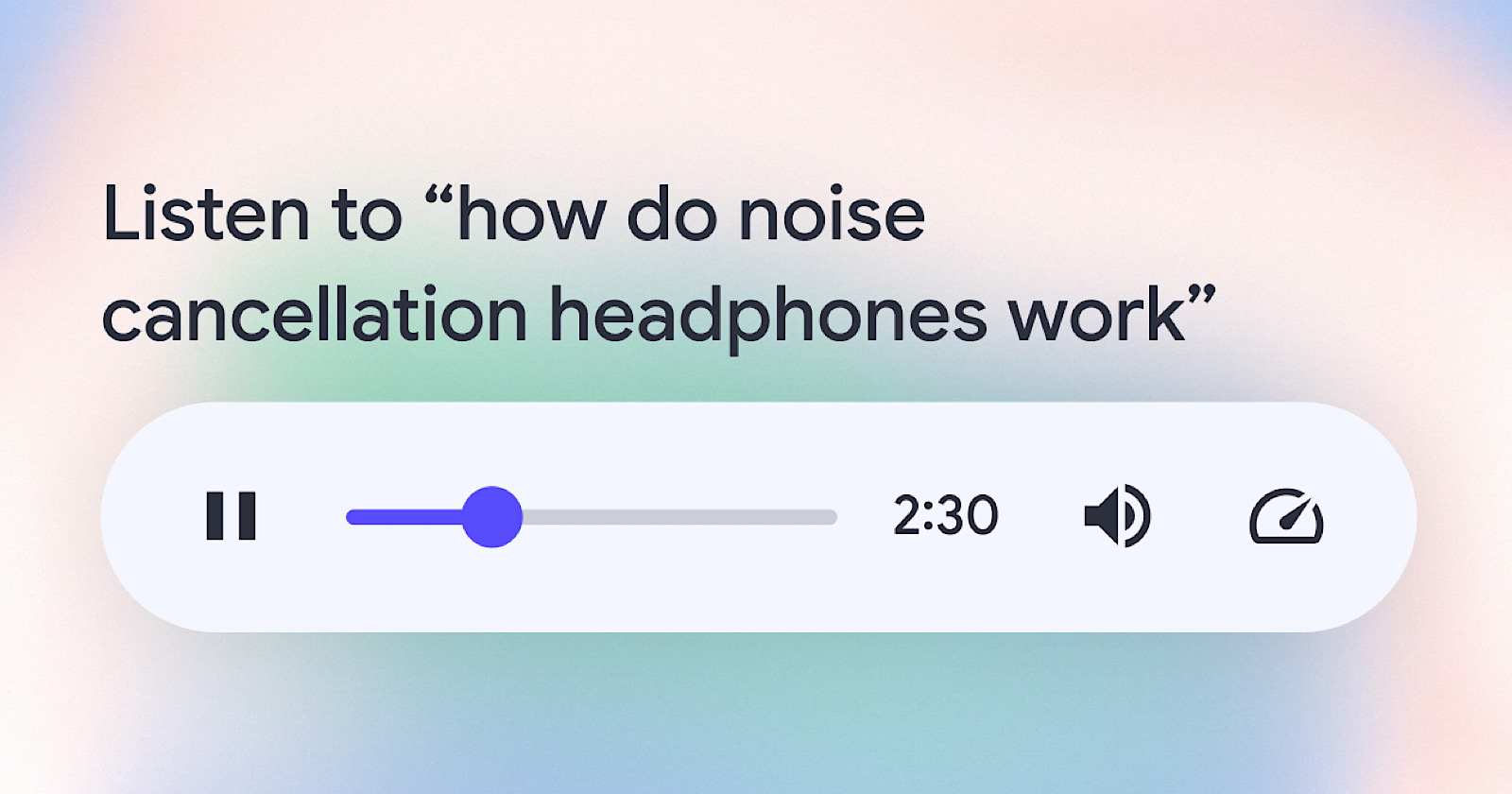




![Brand and SEO Sitting on a Tree: K-I-S-S-I-N-G [Mozcon 2025 Speaker Series]](https://moz.com/images/blog/banners/Mozcon2025_SpeakerBlogHeader_1180x400_LidiaInfante_London.png?auto=compress,format&fit=crop&dm=1749465874&s=56275e60eb1f4363767c42d318c4ef4a#)

![How To Launch, Grow, and Scale a Community That Supports Your Brand [MozCon 2025 Speaker Series]](https://moz.com/images/blog/banners/Mozcon2025_SpeakerBlogHeader_1180x400_Areej-abuali_London.png?auto=compress,format&fit=crop&dm=1747732165&s=beb7825c980a8c74f9a756ec91c8d68b#)
![Clicks Don’t Pay the Bills: Use This Audit Framework To Prove Content Revenue [Mozcon 2025 Speaker Series]](https://moz.com/images/blog/banners/Mozcon2025_SpeakerBlogHeader_1180x400_Hellen_London.png?auto=compress,format&fit=crop&dm=1747758249&s=9f3c5b1b7421f862beace1cb513053bb#)









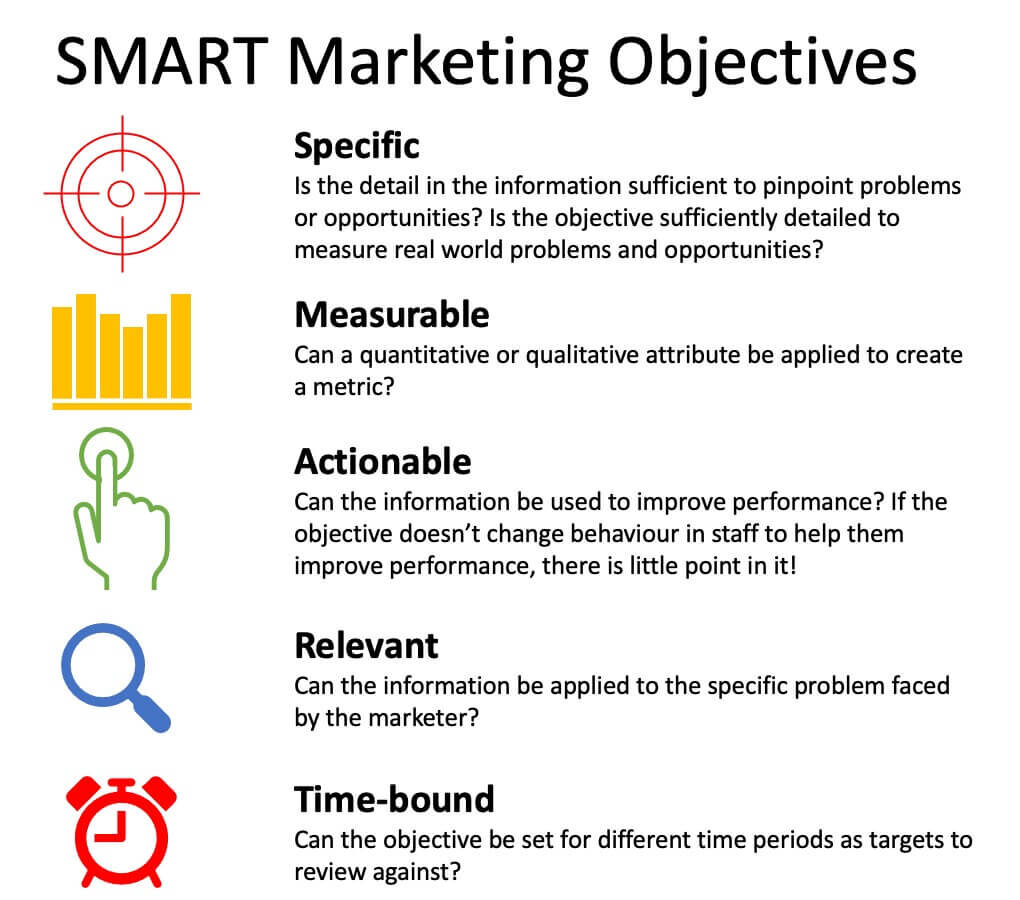
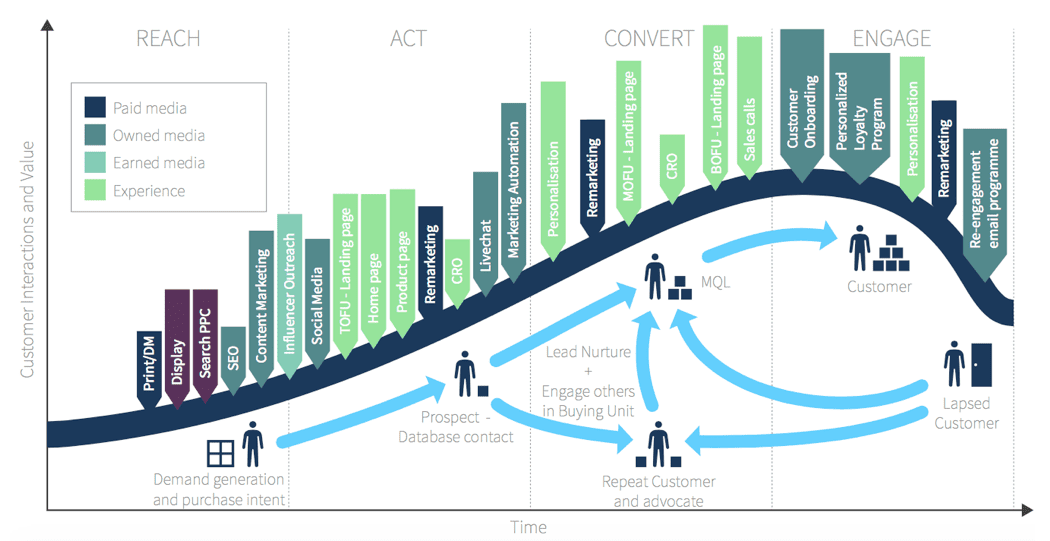
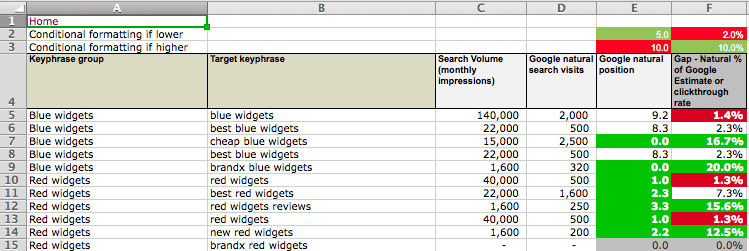
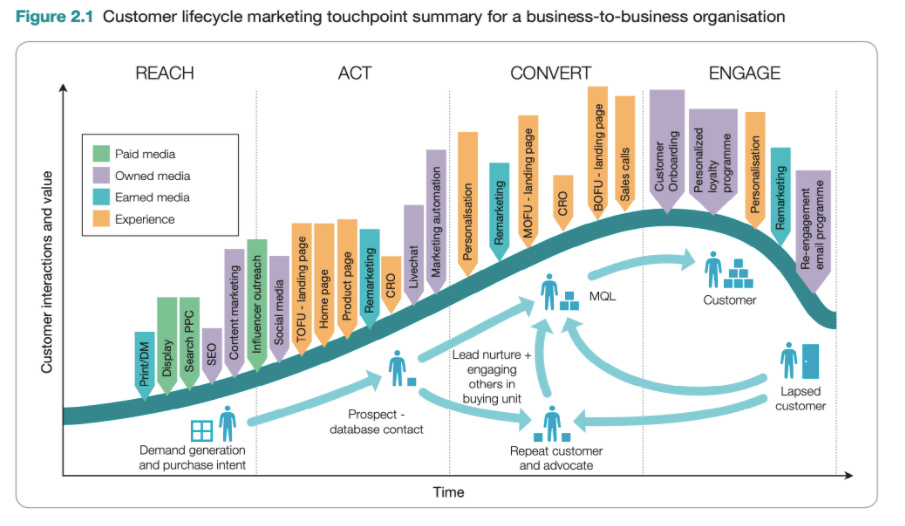











![The 11 Best Landing Page Builder Software Tools [2025]](https://www.growthmarketingpro.com/wp-content/uploads/2024/04/best-landing-page-software-hero-image-1024x618.png?#)



































![How to Create an SEO Forecast [Free Template Included] — Whiteboard Friday](https://moz.com/images/blog/banners/WBF-SEOForecasting-Blog_Header.png?auto=compress,format&fit=crop&dm=1694010279&s=318ed1d453ed4f230e8e4b50ecee5417#)



![How To Build AI Tools To Automate Your SEO Workflows [MozCon 2025 Speaker Series]](https://moz.com/images/blog/banners/Mozcon2025_SpeakerBlogHeader_1180x400_Andrew_London-1.png?auto=compress,format&fit=crop&dm=1749642474&s=7897686f91f4e22a1f5191ea07414026#)




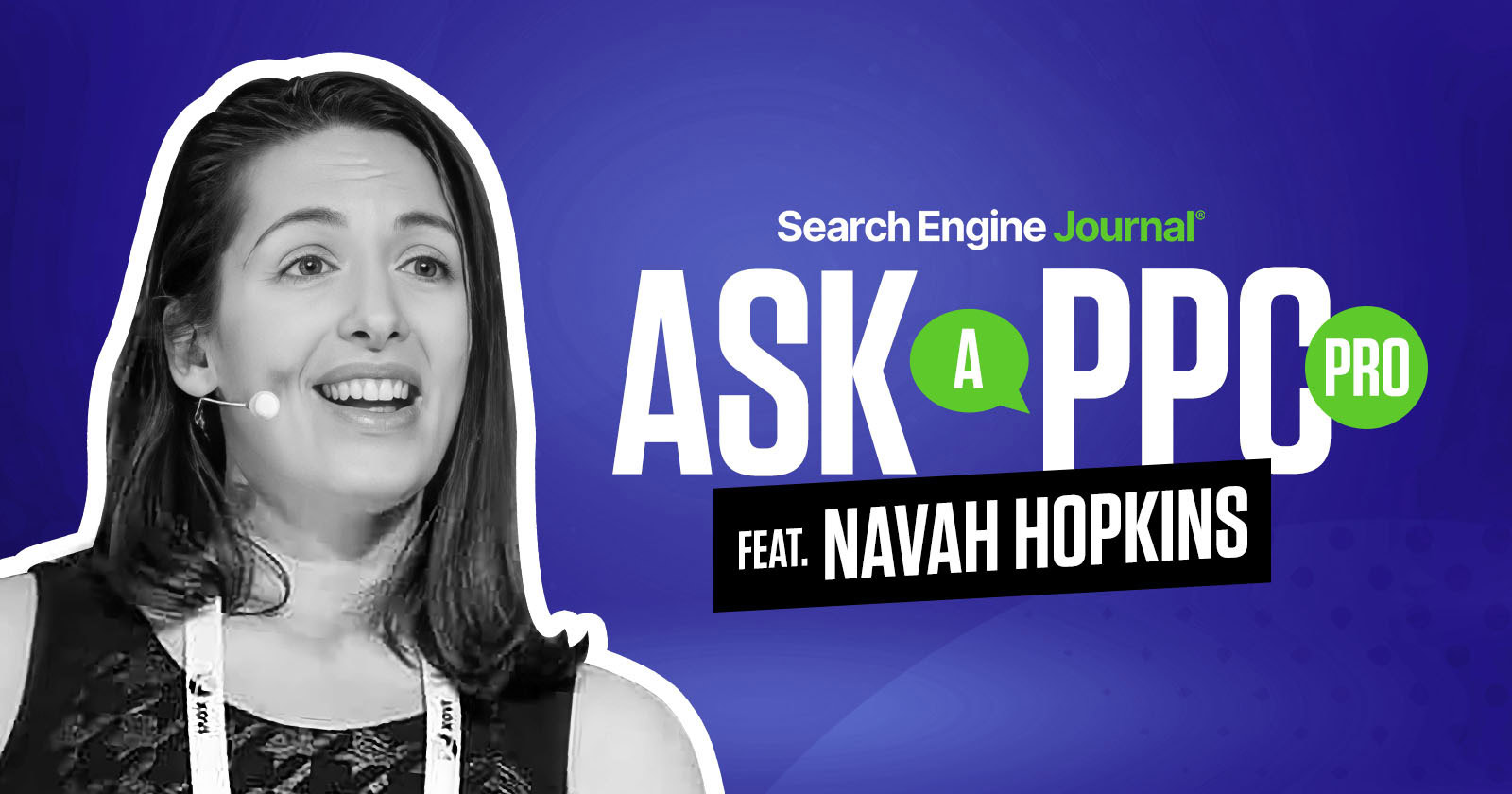









![Marketers Using AI Publish 42% More Content [+ New Research Report]](https://ahrefs.com/blog/wp-content/uploads/2025/06/marketers-using-ai-publish-42-more-by-ryan-law-data-studies-1.jpg)


![Instagram hashtags: How to find best hashtags for Instagram [+ list]](https://media.sproutsocial.com/uploads/2023/07/Instagram-hashtags-how-to-find-and-use-the-best-hashtags-Final.jpg)









![Brand pitch guide for creators [deck and email templates]](https://blog.hootsuite.com/wp-content/uploads/2022/06/brand-pitch-template.png)



![The HubSpot Blog’s AI Trends for Marketers Report [key findings from 1,000+ marketing pros]](https://www.hubspot.com/hubfs/state-of-AI-1-20240626-53394.webp)
![AI can boost conversions from your web page — HubSpot’s CMO shows you how [tutorial]](https://knowledge.hubspot.com/hubfs/ai-1-20250605-395473.webp)
![The state of inclusive marketing in 2025 [new data + expert insight]](https://www.hubspot.com/hubfs/inclusive-marketing-report.webp)











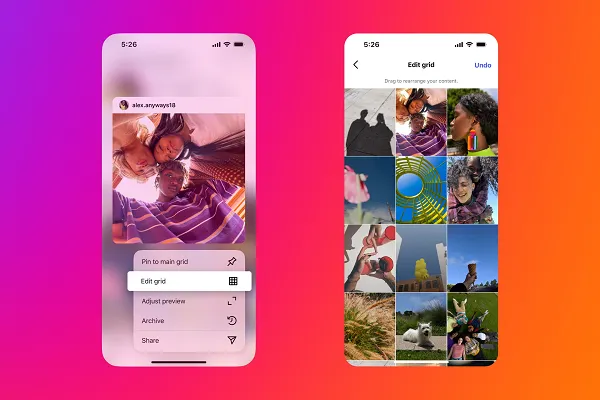
![X Highlights Back-To-School Marketing Opportunities [Infographic]](https://imgproxy.divecdn.com/dM1TxaOzbLu_kb9YjLpd7P_E_B_FkFsuKp2uSGPS5i8/g:ce/rs:fit:770:435/Z3M6Ly9kaXZlc2l0ZS1zdG9yYWdlL2RpdmVpbWFnZS94X2JhY2tfdG9fc2Nob29sMi5wbmc=.webp)
